Gaskets may be one of the least expensive parts in your aftertreatment system, but aftermarket and OEM gaskets can end up costing a lot more when they’re overlooked. Our friend “Joe” learned that the hard way.
Joe was the fleet maintenance manager for a local trucking company. His biggest customer was a gourmet grocery chain with ten locations, and he ran a tight operation to get high-value perishable goods to each store. He recently started using a new repair shop for DPF cleaning and maintenance on his fleet of 50 trucks. Once the trucks had been cycled through the new shop, they started breaking down one by one. Soon enough, half of the fleet was out of commission, and the grocery chain was threatening to drop Joe’s company.
What Joe didn’t know was that the great rates he worked out with the repair shop were at the expense of the gaskets they used. The shop used low-quality “will-fit” gaskets on Joe’s fleet, instead of high-quality direct-fit replacements. The imperfect fit and sub-standard materials caused a loss of pressure in the aftertreatment system, and Joe ended up with de-rated trucks sitting in the yard.
The Price of Aftermarket or OEM Gaskets

A new OEM gasket for heavy-duty vehicles can cost about $40-$70 per unit, while high-quality aftertreatment DPF gaskets usually average $20-$40, depending on the make and model. However, the cost of using a cheap gasket can be much higher.
In Joe’s case, the repair shop’s desire to save a few pennies ended up costing Joe $125 for an hour of labor per truck, plus the cost of the new higher-quality gasket. For all 50 trucks to be repaired, Joe’s maintenance budget took a hit of nearly $8,000. All for something as small as a DPF gasket!
Gasket Materials
While many gaskets in gas-powered vehicles are made from plastic or rubber, most gaskets in the aftertreatment system are made of metal. This is because the temperature of the aftertreatment system can reach 1200° F during a regen cycle. Rubber and plastic would quickly melt at this temperature, so various metals are used instead.
A common material used for DPF gaskets is mechanically-bonded graphite with a stainless steel mesh core. Graphite can withstand high temperatures and it is self-lubricating, eliminating the need for traditional lubricants and allowing it to maintain an air-tight seal. For these reasons, graphite is also used in spacecraft rocket boosters! Other gaskets in the aftertreatment system use steel or an alloy that is stamped into the correct shape and size.
Aftermarket vs OEM Gaskets
An OEM gasket refers to those installed by the original equipment manufacturer, while aftermarket gaskets are those you can purchase as replacements and are made by other manufacturers. The OEM gasket is usually high-quality and is precisely engineered to work with the other components in the aftertreatment system. These seals do wear out and need to be replaced regularly.
The aftermarket gasket options vary in quality. Some aftermarket gaskets use different materials from the OEM and might not perform at the same standards. Other aftermarket gaskets use the exact same or better materials and may even have a longer life cycle than OEM options. An aftermarket gasket is usually much less expensive than OEM.
Joe’s old repair shop used “will-fit” aftermarket gaskets. This means the gasket is pretty close to OEM specs, but they’re not exact. Manufacturers of will-fit gaskets often merge multiple similar gaskets into one SKU, to save them money and simplify their offerings. Unfortunately, these will-fit gasket options just don’t perform.
Exact-fit or direct-fit gaskets are manufactured to the exact OEM specs. Joe learned how important this is to maintain an air-tight seal within the extreme environment of the aftertreatment system because if that seal is not maintained, the trucks will end up de-rating.
Replacing Gaskets
The gasket in the aftertreatment system should be replaced whenever the component is serviced. For example, DPF gaskets should be replaced when the DPF is cleaned. This is because the extreme temperature fluctuations will warp the gasket over time, even if it is of the highest quality. A warped or worn gasket will not produce an air-tight seal.
High-Quality Aftermarket Gaskets

Joe never expected that one small part could wipe out half his fleet and put the company’s biggest client at risk.
Finding a dependable aftermarket supplier of high-quality gaskets may seem difficult. There are many suppliers out there. High-quality gaskets will be labeled “exact-fit” or “direct-fit” which means they are designed to the exact specifications and stringent criteria as the OEM gasket. Avoid replacement gaskets labeled “will-fit” because they are not designed to the same standard. Aftermarket options should also be made with the same or better material selection than OEM. Suppliers who use inferior materials should be avoided.
Joe quickly switched to a different repair shop that only uses direct-fit options from North American suppliers, and got all his trucks repaired with DPF gaskets from DPFPartsDirect.com.
DPF Parts Direct offers both OEM and aftermarket gaskets that are of the highest quality with 99% same-day shipping. Our wide selection of OEM and aftermarket gaskets are easily searchable by make and part number crosses. We also provide sensors, weld bungs, v-clamps, DPFs and DOCs, and more. Industry experts are available Monday-Friday to help customers determine the correct gasket for your application. Contact Us today to find the gasket you need.


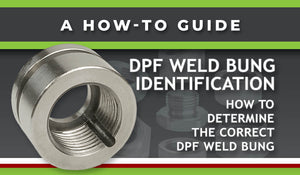
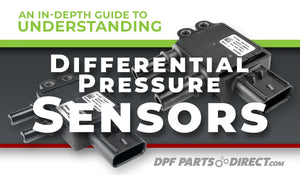
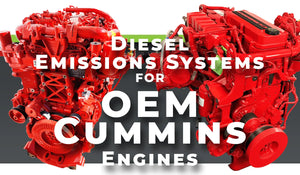
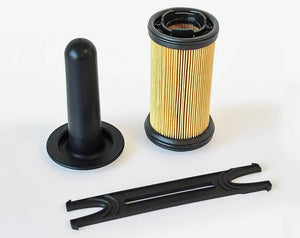
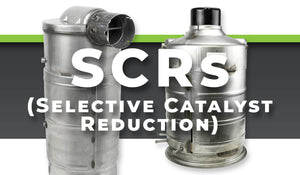


Comments 0